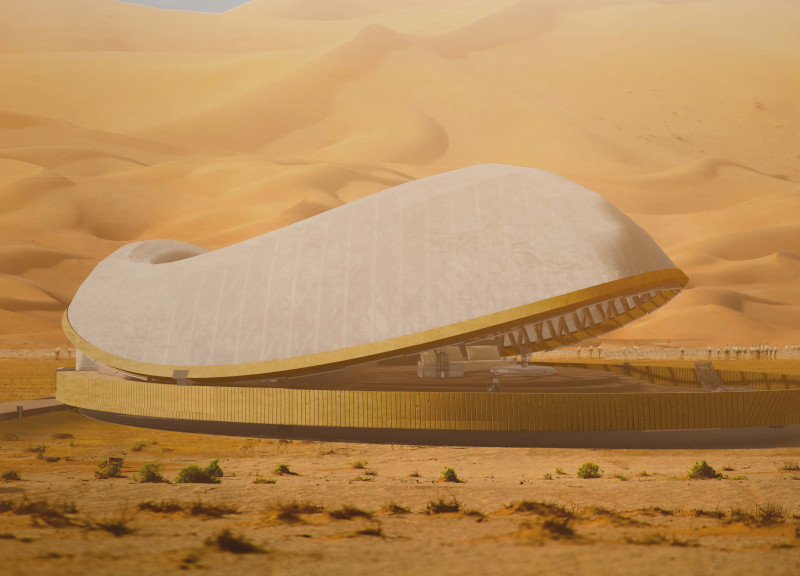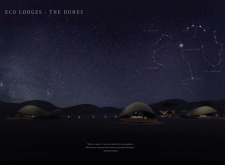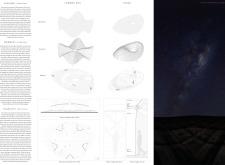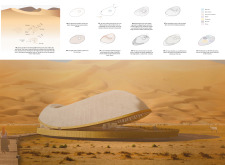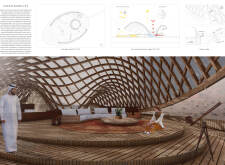5 key facts about this project
The project "Eco Lodges – The Dunes" represents a sustainable architectural initiative located in a desert environment. This development aims to create a series of eco-friendly lodgings that integrate seamlessly with the surrounding landscape. The design emphasizes an immersive experience, connecting guests with nature while maintaining a low ecological footprint. The architecture prioritizes sustainability through innovative design approaches that consider climatic challenges and resource management.
Design Philosophy and Functionality
The architecture of the Eco Lodges is defined by its organic forms, which are inspired by the natural contours of the dunes in the area. The project functions as a hospitality destination, providing a retreat for visitors seeking tranquility and a connection with the desert landscape. Each lodge is designed as an individual unit with the intent to promote privacy while fostering a sense of community through shared common spaces.
Key design elements include:
- Membrane structures that create fluid, lightweight forms, optimizing airflow and temperature regulation.
- A central Common Hub that serves as a multi-functional gathering space, facilitating dining, social interaction, and relaxation.
- Open floor plans within the lodges that encourage an unobstructed flow between indoor and outdoor environments.
The architecture incorporates sustainable building practices, including passive solar design principles and efficient water management systems. These features ensure that the project is not only functional but also environmentally responsible.
Unique Design Approaches
What differentiates "Eco Lodges – The Dunes" from similar projects is its comprehensive integration of sustainability and architecture. The use of locally sourced materials, such as recycled wood and insulating materials, supports the environmental ethos of the project. This conscious material selection contributes to the overall aesthetic while also minimizing ecological impact.
Furthermore, the project employs innovative water conservation techniques, including rainwater harvesting and greywater recycling systems. These systems are essential in a desert setting where water is scarce. The landscaping integrates native plant species that require minimal irrigation, supporting local biodiversity.
Spatial Dynamics and Interaction
The design fosters interaction between guests and the environment. Each lodge features terraces and outdoor lounges that enhance the outdoor experience and encourage engagement with the natural surroundings. The overall layout promotes an organic flow between the structures, common areas, and the desert environment.
Architectural plans and sections emphasize the project's commitment to functionality and aesthetic coherence. The design addresses both the practical needs of guests and the unique challenges posed by the desert climate.
For those interested in exploring further, reviewing the architectural plans, sections, and detailed designs will provide deeper insights into the innovative approaches and thoughtful integrations that characterize this project.


